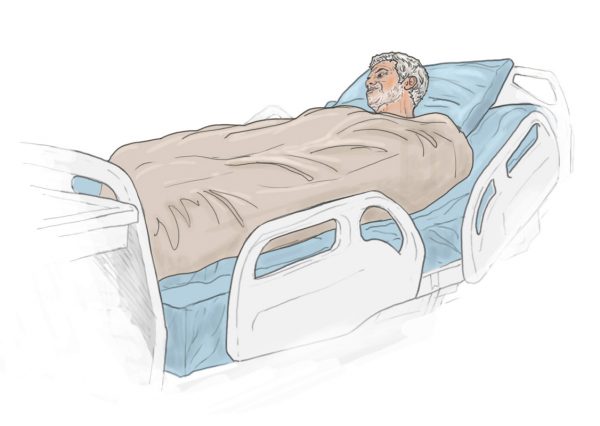Reflection: elderly man
| You meet a patient, an elderly man, who is bedridden. His skin is pale and cool. His respiratory rate is rapid. He seems tired and says he feels sick. He trembles uncontrollably and his teeth are chattering. He says that many people around him have had the flu. Which nursing measures will you implement? Justify your actions. |
|---|
| Judging from all of the symptoms, there is a probability that the man has pyrexial chills. The reason that he feels cold is that his body temperature is lower than the body's thermostat is set to. In which case, the body tries to correct this. It does this partly by reducing heat loss from the skin by contracting the peripheral blood vessels. In addition, the patient experiences "goose bumps", which also helps to retain heat by making the hairs stand on end over the skin’s surface. The nurse should cover the patient with blankets to help increase body temperature. When the body temperature gradually reaches the temperature the thermostat is set at the capillaries dilate and the skin feels warm. The temperature will gradually fall as the patient sweats and it is therefore important to keep the patient hydrated. Shivering may be a very unpleasant experience for the patient. Pain can be more intense because of muscle tremor. It is also important for a doctor to ascertain the cause of the pyrexia to initiate treatments the patient may require. |




